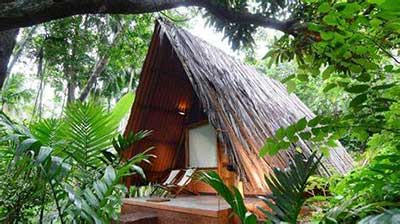Date: 21/02/2023
Relevance: GS-3: Indian Economy and issues relating to planning, mobilization, of resources, growth, development, and employment.
Key Phrases: Swadesh Darshan Scheme, Dekho Apna Desh, Amrit Dharohar scheme, Paramparagat Krishi Vikas Yojana (PKVY), Great Indian Bustard, agritourism, ecotourism.
Context:
- The Central Nodal Agency – Rural Tourism and Rural Homestays (CNA – RT and RH), the coordinating body amongst Centre, States, and other stakeholders, has identified six niche experiences for tourists wanting to visit rural India, including agritourism, art and culture, ecotourism, wildlife, tribal tourism, and homestays.
Key Highlights:
- More than 134 villages have been listed, each of which provides a set of unique experiences to tourists.
- For instance,
- Tamil Nadu’s Kolukkumalai is the highest tea plantation in the world;
- Kerala’s Dewalokam is a yoga centre on the banks of a river;
- Nagaland’s Konyak Tea retreat takes visitors on a trip through tribal culture;
- Telangana’s Pochampalli village showcases its traditional weaving techniques; and
- Himachal Pradesh’s Pragpur village plunges visitors into Kangra heritage architecture.
- Mattur is a village in Karnataka where residents speak only in Sanskrit.
- Maachli in Maharashtra is an agrarian homestay surrounded by coconut, betel, and banana plantations.
- The Bishnoi village in Rajasthan has frequent visits from the endangered Great Indian Bustard.
- These are destinations where tourists can immerse themselves in the rural tourism experience that the government is now developing.
- Depending on the experience, tourists can sample the local cuisine, see how crops are grown, participate in textile weaving, witness folk art being practiced and performed, and go on nature trails, all the while living within the community.
Sustainable Tourism
- The focus of this rural push is sustainability, avoiding large-scale infrastructure development, and without much private sector participation.
- Instead, efforts would be to rope in local resources and communities to provide a unique organic experience.
- This would bolster employment opportunities in villages.
- The Union Tourism Ministry is in the process of formulating a budget, with certain training modules at district levels being 100% centrally financed, and other aspects being 60% Centre and 40% State financed.
- While there is a lack of consolidated data on global rural tourism trends, U.S.-based market research firm Grand View Research estimates that agritourism alone will develop at a compound annual growth rate (CAGR) of 11.4% from 2022 to 2030.
Village Clusters
- A key part of the strategy to promote rural destinations would be to identify clusters of five to seven villages in close proximity.
- A cluster will offer more tourist attractions than rural tourism projects of individual villages separated by long distances.
- It can also aid in the marketing of local products of a group of villages through craft bazaars.
- The Central Nodal Agency has asked States to identify both individual and clusters of villages having high potential for tourism development.
- The government is also looking at Rurban clusters of the Rural Development Ministry, where a cluster of villages that have the potential for growth are identified.
Steps taken by the Government to Promote Rural Tourism
- Creating assets under MGNREGA:
- The Ministry of Rural Development has been asked to explore the possibility of creating assets under MGNREGA for tourist infrastructure.
- Exploring organic agriculture areas:
- The Government is exploring organic agriculture areas developed under the Paramparagat Krishi Vikas Yojana (PKVY) and Mission Organic Value Chain Development in North East Region (MOVCD-NER) for development as rural tourist spots.
- State assessment and ranking criteria:
- The Tourism Ministry is also working on launching the State assessment and ranking criteria to help foster competition and reach the overarching objectives of promoting sustainable and responsible tourism.
- Swadesh Darshan Scheme:
- The “Swadesh Darshan Scheme” seeks to establish “integrated development of theme-based tourist circuits.
- Dekho Apna Desh:
- “Dekho Apna Desh” scheme, which aims to persuade the middle class to visit domestically rather than abroad.
- Vibrant Village Program:
- In border settlements, the Vibrant Village Program will build tourism infrastructure.
- Amrit Dharohar scheme:
- The purpose of this program’s inception is preservation and conservation.
- It will make the best use of the area’s wetlands, boost biodiversity, and promote ecotourism options, all of which will increase tourism.
- Unity Malls to be launched:
- The establishment of Unity malls at well-known tourist destinations will allow the central government to assist the state governments in promoting local handicraft products.
- These malls will feature GI items and the state’s unique ODOPS (one district, one product).
- Boost to infrastructure:
- The Union Budget also mentioned the development of 50 more airports, heliports, water aerodromes, and other landing areas.
- Additionally, the railways have received Rs2.40 lakh crores. Tourism will inevitably rise as connectivity improves and there are more options for getting there.
Conclusion:
- A focus on rural tourism with investments in infrastructure, access to attractions, and local communities is one of the efforts the government has launched to support the tourism sector.
- As a result, jobs will be created and the cultural legacy will be preserved, attracting tourists to India.
- Not only can rural tourism revitalize local art and crafts and prevent viable traditional occupations from being displaced, it will also help redevelop rural areas and rejuvenate rural life.
Source: The Hindu
Mains Question:
Q. Discuss the potential of rural tourism in India. What are the various steps the government has taken to promote it? (250 words).






















